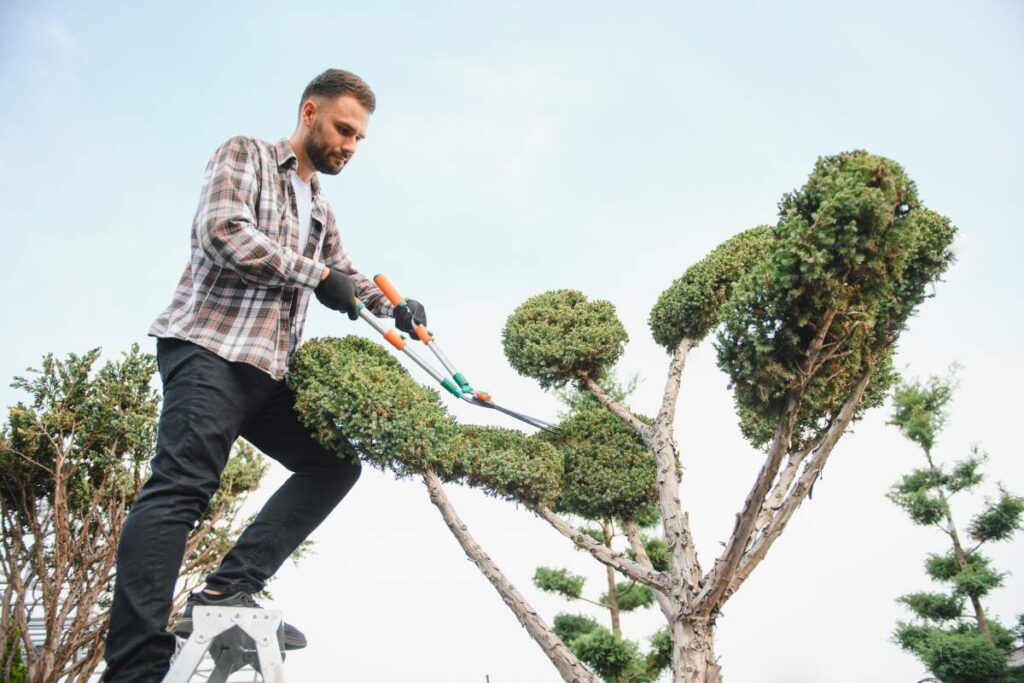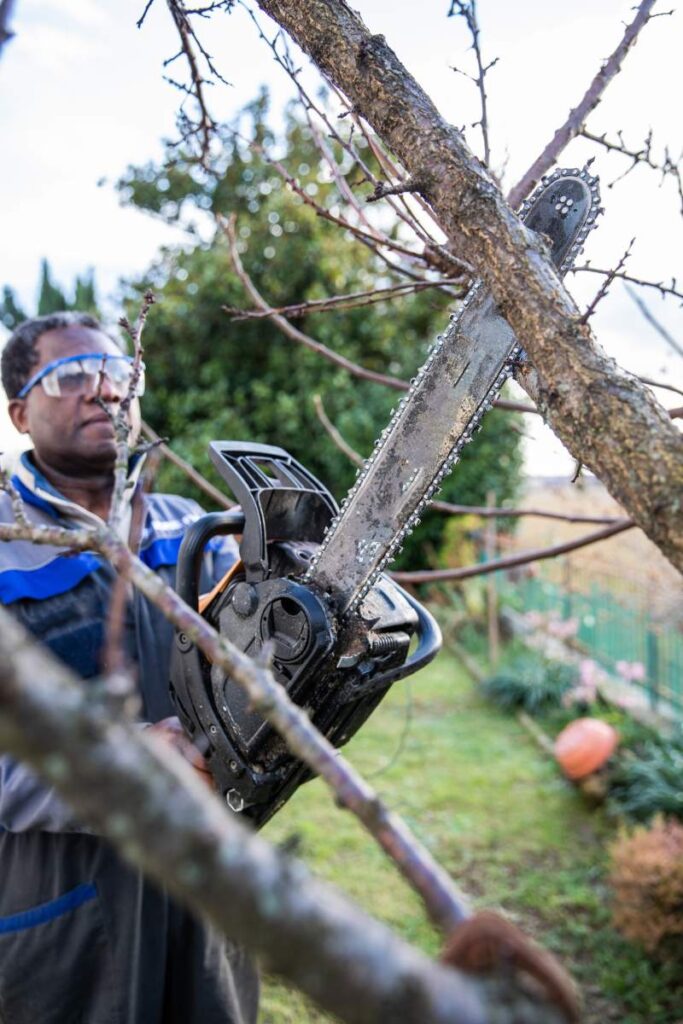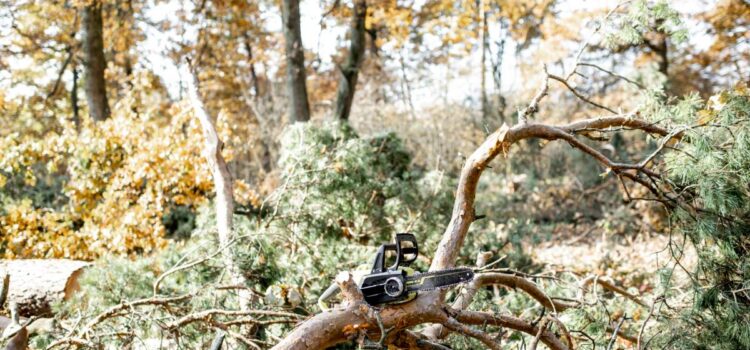Tree pruning is more than just an aesthetic practice; it’s a vital part of tree care that promotes healthy growth, safety, and the longevity of your landscape. Pruning involves selectively removing branches or stems to improve a tree’s structure and health.
But what happens if you neglect this essential task? And when is the best time to prune your trees? This comprehensive guide explores the importance of tree pruning, the potential consequences of neglect, and the ideal timing for the job.
Why Tree Pruning is Important
1. Promotes Tree Health
Pruning helps trees grow healthier by removing dead, diseased, or damaged branches. These problematic branches can host pests or fungi that may spread throughout the tree, compromising its health. By eliminating such branches, you ensure the tree directs its energy toward healthy growth.
2. Enhances Safety
Overgrown branches can pose a serious risk to people and property. During storms or strong winds, weak or heavy branches might break and fall, causing injuries or damage. Pruning removes hazardous limbs, significantly reducing the risk of accidents.
3. Improves Aesthetic Appeal
Proper pruning enhances the natural shape and beauty of a tree, making your landscape more appealing. Well-maintained trees boost curb appeal, potentially increasing property value.
4. Increases Fruit and Flower Production
For fruit trees and flowering plants, pruning is essential for optimal yield. Removing excess branches allows sunlight to penetrate the tree’s canopy and ensures better air circulation, which is crucial for fruit and flower development.
5. Controls Tree Size and Shape
Pruning helps maintain the desired size and shape of a tree, especially in urban areas where space may be limited. Overgrown trees can encroach on power lines, buildings, or other structures, leading to potential hazards or property disputes.

What Happens if You Don’t Prune Trees?
Neglecting tree pruning can have several negative consequences:
1. Structural Weakness
Unpruned trees often develop weak or overextended branches that can break easily. This can lead to a poorly structured tree, which is more susceptible to damage from environmental stressors like wind, storms, or heavy snow.
2. Increased Risk of Disease
Dead or diseased branches provide an entry point for pests and pathogens, which can weaken the entire tree. Over time, this can result in significant decay, possibly requiring the tree’s removal.
3. Reduced Lifespan
Trees that are not pruned may struggle to thrive. They expend energy maintaining dead or damaged branches, which could otherwise go toward healthy growth. This can shorten the tree’s overall lifespan.
4. Hazard to Safety
Unpruned trees with overgrown or unstable branches pose a risk to pedestrians, vehicles, and buildings. The longer these branches remain, the greater the risk of accidents, especially in adverse weather conditions.
5. Poor Aesthetic Appeal
Neglected trees can become overgrown and unsightly, negatively impacting the overall look of your property. In extreme cases, overgrowth may block sunlight to other plants, inhibiting their growth.
When Should You Prune Trees?
The timing of tree pruning depends on the tree species, its growth cycle, and your specific objectives. Below are general guidelines for different scenarios:

1. Winter Pruning
- Why: Most trees are dormant during the winter months, making it an ideal time for pruning. With fewer leaves, it’s easier to see the tree’s structure and identify branches that need removal.
- Best for: Encouraging vigorous growth in the spring. This is particularly beneficial for deciduous trees.
2. Summer Pruning
- Why: Pruning in summer can help control growth and shape the tree. It’s also a good time to address specific problems like diseased branches.
- Best for: Slowing growth of overgrown trees or managing specific shapes.
3. Spring Pruning
- Why: Early spring pruning is suitable for removing damaged or dead branches before new growth begins.
- Best for: Trees that bloom in summer, as pruning after their blooming period ensures you don’t cut off flower buds.
4. Fall Pruning
- Why: Pruning in the fall is generally discouraged because it may stimulate new growth, which could be damaged by early frosts. However, it can be done to remove hazardous branches.
- Best for: Emergency pruning or safety concerns.
5. Specific Considerations for Fruit Trees
- Fruit trees benefit most from late winter or early spring pruning before they start to bud. This timing promotes better fruit production and ensures healthy growth.
Tips for Effective Tree Pruning
- Use Proper Tools: Invest in quality pruning tools like shears, loppers, and saws to make clean cuts that minimize harm to the tree.
- Hire Professionals for Large Trees: For tall or complex trees, hiring certified arborists ensures safe and effective pruning.
- Avoid Over-Pruning: Removing too many branches at once can stress the tree, making it vulnerable to disease and pests.
- Follow the 1/3 Rule: Never remove more than one-third of a tree’s branches at a time to prevent shock.
- Disinfect Tools: Clean your tools between cuts to avoid spreading diseases.
Pruning vs. Other Tree Care Tasks
It’s important to distinguish pruning from other tree care tasks like trimming and thinning. While pruning focuses on health and structure, trimming is primarily for aesthetic purposes. Thinning, on the other hand, involves selectively removing branches to improve light and air penetration.
For tasks requiring expertise, such as removing large branches or addressing tree diseases, consult professionals like AB Trees, who specialize in tree pruning, trimming, and overall care.
Conclusion
Tree pruning is an essential practice that contributes to the health, safety, and beauty of your trees and property. Without proper pruning, trees can become hazardous, unsightly, and susceptible to disease, potentially leading to costly consequences.
Knowing when to prune and how to do it effectively ensures that your trees grow strong and healthy, adding value to your landscape. Whether you’re maintaining a small backyard tree or caring for a sprawling estate, regular pruning is an investment in the long-term health and aesthetics of your property.
If you’re unsure about how or when to prune, reach out to a certified professional like A Trees for guidance and assistance. By prioritizing tree care, you’ll enjoy a safer, more beautiful environment for years to come.






